A narrow beam PQ of white light is passing through a glass prism ABC as shown in the diagram. Trace it one your answer sheet and show the path of the emergent beam as observed on the screen DE.
(i) Write the name and cause of the phenomenon observed.
(ii) Where else is nature is the phenomenon observed ?
(iii) Based on this observation, state the conclusion which can be drawn about the constituents of white light.
(i) The phenomenon observed is dispersion of light which means splitting of white light into its constituent colours. It is caused because different constituent colours of light travel with different speeds in the prism and bend through different angles.
(ii) In nature, this pehnomenon is observed in formation of rainbow.
(iii) Based on phenomenon of dispersion, we can conclude that : (a) White light consists of seven colours.
(b) Violet light suffers maximum deviation and red light suffers minimum deviation.
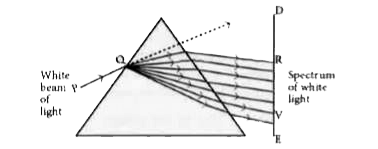
Topper's Solved these Questions
- THE HUMAN EYE AND THE COLOURFUL WORLDBOOK - ZEN PUBLICATIONCHAPTER - THE HUMAN EYE AND THE COLOURFUL WORLDEXERCISE - ZEN ADDITIONAL QUESTIONS SECTION - Problem Section
36 Videos
- THE HUMAN EYE AND THE COLOURFUL WORLDBOOK - ZEN PUBLICATIONCHAPTER - THE HUMAN EYE AND THE COLOURFUL WORLDEXERCISE - ZEN ADDITIONAL QUESTIONS SECTION - HIGHER ORDER THINKING SKILLS (HOTS)
26 Videos
- THE HUMAN EYE AND THE COLOURFUL WORLDBOOK - ZEN PUBLICATIONCHAPTER - THE HUMAN EYE AND THE COLOURFUL WORLDEXERCISE - ZEN ADDITIONAL QUESTIONS SECTION - SHORT ANSWER TYPE QUESTIONS - I
66 Videos
- SOURCES OF ENERGYBOOK - ZEN PUBLICATIONCHAPTER - SOURCES OF ENERGYEXERCISE - ZEN ADDITIONAL QUESTIONS SECTION (HIGHER-ORDER THINKING SKILLS [HOTS] )
14 Videos
Similar Questions
A narrow beam PQ of white light is passing through a glass prism ABC as shown in the diagram
(i) Write the name and cause of the phenomenon observed.
(ii) Where else in nature is this phenomenon observed ?
(iii) Based on this observation, state the conclusion which can be drawn about the constituents of white light.
View SolutionA narrow beam PQ of white light is passing through a glass prism ABC as shown in the diagram. Study the diagram and answer any four questions.
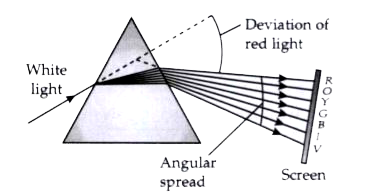
What is dispersion of light?
View Solution
Knowledge Check
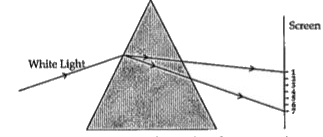
In nature, this phenomenon is observed inAFormation of rainbowBTwinkling of starsCBlue colour of skyDAdvance sunriseA narrow beam PQ of white light is passing through a glass prism ABC as shown in the diagram. Study the diagram and answer any four questions.
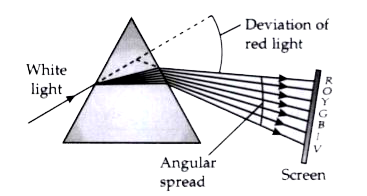
In nature, this phenomenon is observed inAFormation of rainbowBTwinkling of starsCBlue colour of skyDAdvance sunriseA narrow beam PQ of white light is passing through a glass prism ABC as shown in the diagram. Study the diagram and answer any four questions.
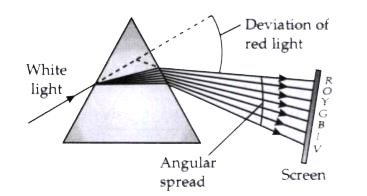
Name the phenomenon observed in above set-up.APersistence of visionBDispersion of lightCTwinkling of starsDMirage
A narrow beam PQ of white light is passing through a glass prism ABC as shown in the diagram. Study the diagram and answer any four questions.
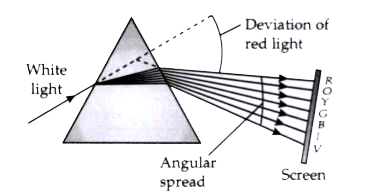
Which of the following statement is correct about constituents of white light based on above bservations?
View SolutionA narrow beam PQ of white light is passing through a glass prism ABC as shown in the diagram. Study the diagram and answer any four questions.
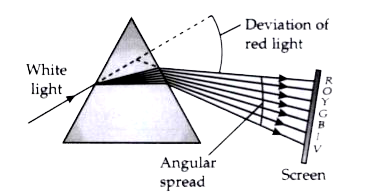
Which of the following statements is correct regarding the propagation of light of different colours of white light in air?
View SolutionWhen a beam of white light passes through a glass prism,
the colour of light beam that deviates the least is
View SolutionWhen a narrow beam while light is passed through a glass prism, the different wavelength travel thorugh the glass at
View SolutionWhen a beam of white light passes through a glass prism, it splits up into seven colours. This phenomenon is due to
View Solution
